Spiclypeus shipporum – Adding to the Judith River Formation Biota
When Dr Bill Shipp, a retired nuclear physicist, invested in a property in Montana, he little thought that he would be making a significant contribution to palaeontology. However, thanks to the chance discovery of some disarticulated fossil material found on his land, a new species of horned dinosaur has been named and described (Spiclypeus shipporum).
A New Horned Dinosaur
The fossilised bones of a new type of chasmosaurine ceratopsid were found in 2005 and purchased by the Canadian Museum of Nature last year. The material which includes about fifty percent of the skull, rib fragments, dorsal vertebrae and limb bones was studied by an international team of scientists including our chum Pete Larson (Black Hills Institute of Geological Research), David Evans (Royal Ontario Museum) and lead author of the academic paper published in the open access on line journal PLOS One, Jordan Mallon of the Canadian Museum of Nature.
An Illustration of the Newly Described Horned Dinosaur Spiclypeus shipporum
Picture credit: Mike Skrepnick
A Spiclypeus dinosaur model is featured in the Beasts of the Mesozoic articulated model series.
To view the Beasts of the Mesozoic models: Beasts of the Mesozoic Dinosaurs.
One Very Tough Dinosaur Indeeed!
The beautiful illustration of S. shipporum above depicts the dinosaur with its left forelimb raised off the ground. The left humerus showed extensive pathology – acute arthritis and osteomyelitis (bone infection). This dinosaur would have been in a great deal of pain and it was likely that the left forelimb could not support the animal’s weight. Dr Edward Iuliano, a radiologist at the Kadlec Regional Medical Centre (Richland, Washington), one of the authors of the scientific paper conducted an in-depth analysis of the pathology. It is likely that the animal lived for a number of years but was effectively crippled.
Dr Mallon explained:
“If you look near the elbow, you can see great openings that developed to drain an infection. We don’t know how the bone became infected, but we can be sure that it caused the animal great pain for years and probably made its left forelimb useless for walking.”
Some of the Fossil Bones (Limb bones and partial Ilium) from Spiclypeus shipporum
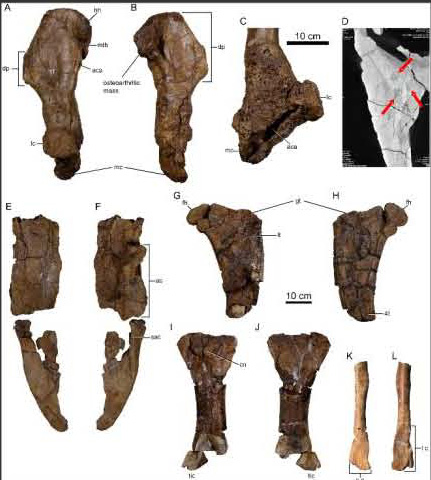
Limb bones and ilium of Spiclypeus shipporum. The infected end of the humerus can be seen (c and d).
Picture credit PLOS One
Ceratopsian Head Injury
In addition to the severely damaged left forelimb, this dinosaur nicknamed “Judith” after the Judith River Formation, had suffered a head injury. The left squamosal bone shows two distinct holes. Although holes in the head shield of chasmosaurine dinosaurs are quite common, they do not normally occur so close to the margins. The skull of this dinosaur is unique in having multiple squamosal fenestrae and the ones close to the left side of the head shield are probably more evidence of pathology. Signs of bone infection (osteomyelitis) support this hypothesis.
Although the scientists cannot be certain how the injury occurred, it has been speculated that the wound could have been the result of intra-specific combat, that is, a fight with another Spiclypeus.
Dr Jordan Mallon with a Cast of the Dinosaur Skull (CMN 57081)
Picture credit: The Canadian Museum of Nature with additional notation by Everything Dinosaur
The picture above shows Dr Jordan Mallon next to the cast of the skull, we have ringed the damaged element of the squamosal. In the excellent illustration by Mike Skrepnick, the wound to the skull is depicted but many media outlets have failed to pick up this detail in the drawing.
A Close up of the Mike Skrepnick Illustration Showing the Wound to the Side of the Head
Picture credit: Mike Skrepnick with additional notation by Everything Dinosaur
Not Much Better for Spiclypeus Post-mortem
Dr Shipp arranged for the fossil material to be professionally collected, the material was scattered across a bedding plane and two tyrannosaurid teeth found nearby and associated bite marks on the bone indicate that the carcase was scavenged before burial. The crushed and broken nature of the bones suggest that the bones were trampled upon, most probably by other herbivorous dinosaurs. The dinosaur may have been nicknamed “Judith” after the Judith River Formation from which the fossils come, but it is not possible to determine whether the specimen represents a male or a female.
A special exhibition is being held at the Canadian Museum of Nature that features the fossilised bones of this new species of horned dinosaur. The exhibition starts on May 24th.
Landowner Dr Shipp Next to a Cast of the Fossil Skull
Picture credit: Canadian Museum of Nature
The Massive Skull of Spiclypeus shipporum
The massive skull measures 254 centimetres in length, stands 116 centimetres high and is 122 centimetres wide at its widest point. Spiclypeus shipporum is estimated to have been around 4.5 to 5 metres long and to have weighed around 2,000 kilogrammes. A cross-sectional analysis of the bone structure of the femur indicates that this individual was fully grown when it died and was between seven and ten years of age.
Dr Mallon and his colleagues named the dinosaur Spiclypeus shipporum. The genus name is a combination of two Latin words meaning “spiked shield”, the trivial name honours Dr Shipp. The dinosaur’s name is pronounced (spick-lip-ee-us ship-or-rum).
What distinguishes Spiclypeus shipporum from other members of the Chasmosaurinae such as the later Torosaurus and Triceratops is the orientation of the horns over the eyes. The brow horns stick out sideways from the skull. In addition, there is also a unique arrangement to the bony epiparietals (the horns and spikes that surround the head crest), some of the medially located epiparietals curl forward while others project outward.
76-Million-year-old Horned Dinosaur
Commenting on the significance of this fossil discovery, Dr Mallon Stated:
“This is a spectacular new addition to the family of horned dinosaurs that roamed western North America between 85 and 66 million years ago. It provides new evidence of dinosaur diversity during the Late Cretaceous period from an area that is likely to yield even more discoveries.”
As the fossil material were excavated from the Coal Ridge Member of the Upper Cretaceous Judith River Formation, the fossil material is around 76 million years old (Campanian faunal stage). Phylogenetic assessment suggests that Spiclypeus was closely related to Kosmoceratops and Vagaceratops and its discovery will help scientists to assess the evolution of the head crest and head crest ornamentation within chasmosaurine dinosaurs.
Ceratopsians Associated with the Judith River Formation
Spiclypeus is one of only six valid Ceratopsidae genera described from the Judith River Formation, whereas, the contemporaneous Belly River Group (southern Alberta, Canada) has provided evidence of at least fourteen types of horned dinosaurs. In comparison, the Ceratopsidae fauna from the Judith River Formation is relatively poorly understood, but the discovery of Spiclypeus does support the hypothesis that there was rapid evolution in this part of North America towards the end of the Cretaceous and that many regions supported their own unique dinosaur fauna. The unique fauna may have come about as species evolved different dietary specialisations, in biology this is known as a form of niche partitioning.
The other five valid Ceratopsidae species currently recognised from the Judith River Formation are:
- Avaceratops (centrosaurine) – named in 1986.
- Albertaceratops (centrosaurine) – named in 2007.
- Judiceratops (chasmosaurine) – named in 2013.
- Medusaceratops (chasmosaurine) – named in 2010, to read an article about the naming of Medusaceratops: New Horned Dinosaur from Montana.
- Mercuriceratops (chasmosaurine) – named in 2014, to read an article on the discovery of Mercuriceratops: Mercuriceratops – New Horned Dinosaur from North America.


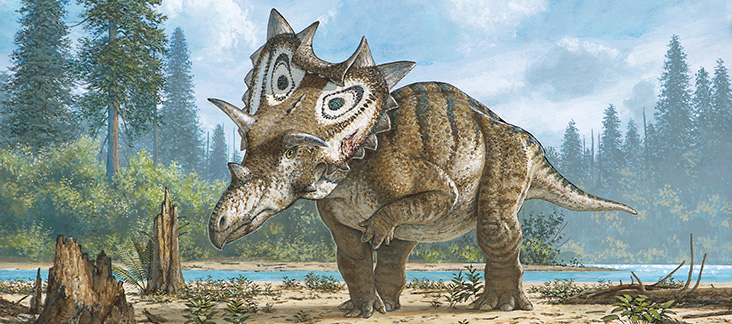
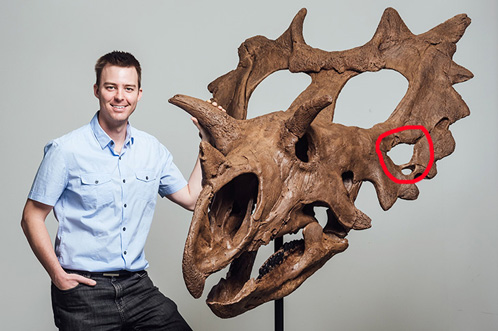
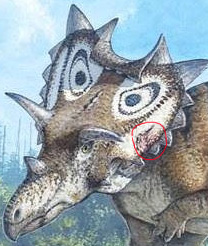
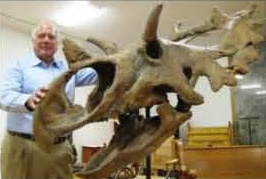




Its realy cool know i Now about the dinosaurs